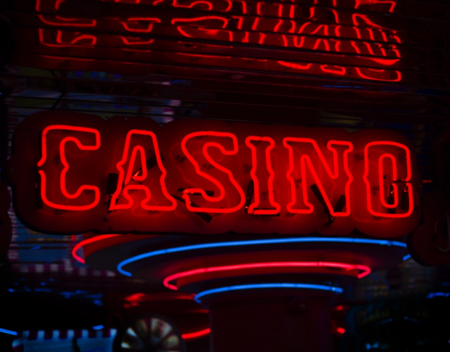
Any betting system can be risky. After all, they require you to increase wagers frequently based on a systematic method.
Of course, some betting strategies are riskier than others. The Grand Martingale is the king of all staking systems with regard to the risk factor. In fact, you might consider it downright crazy to use this system after learning about it.
The following guide discusses exactly how the Grand Martingale works. It also covers whether you’re insane to use it when gambling.
Like the Martingale – Except With a Twist
The Grand Martingale is based on the famed Martingale betting system. The latter operates on the simple premise of doubling wagers after every loss.
You start with the table’s minimum bet (e.g. $5) and continue placing wagers until losing. At this point, you double bets until booking a win. You’ll then return to the table’s minimum stake and begin the process over again.
It’s best to understand the Martingale before jumping into the grand variation. With that said, here’s an example on how the Martingale works:
- Bet $5 and lose.
- Bet $10 and lose.
- Bet $20 and lose.
- Bet $40 and win.
- Return to the $5 wager.
The Grand Martingale adds an extra step to this process. It not only involves doubling bets following losses but also requires adding an additional unit.

The unit size should be based on the table’s minimum wager. Just like with the Martingale, you return to the minimum stake following any win.
Here’s a look at the Grand Martingale in action:
- Unit size (table’s minimum wager) is $1.
- Bet $3 and lose (2 + 1).
- Bet $7 and lose (6 + 1).
- Bet $15 and lose (14 + 1).
- Bet $31 and lose (30 + 1).
- Bet $63 and win (62 + 1).
- Return to a $1 wager.
Here’s another example that involves a more common sequence with plenty of wins and losses:
- Bet $1 and lose; losses at $1.
- Bet $3 and lose; losses at $4.
- Bet $7 and win; winnings at $3.
- Bet $1 and win; winnings at $4.
- Bet $1 and lose; winnings at $3.
- Bet $3 and lose; even.
- Bet $7 and lose; losses at $7.
- Bet $15 and win; winnings at $8.
- Bet $1 and lose; winnings at $7.
- Bet $3 and win; winnings at $10.
- Bet $1 and win; winnings at $11.
Why the Grand Martingale Is Insanely Risky
As you can see, the Grand Martingale isn’t overly difficult to use. However, you might have second thoughts about trying it when considering the following aspects.
The Martingale Is Already Dangerous Enough
The Martingale is already one of the riskiest gambling systems. It calls on you to double bets when you’re in the midst of a losing streak.
This system is great when you quickly win following one or two losses. You’ll start to sweat, though, when loss #4 or #5 comes along.
It’s at this point that you need to worry about hitting the table’s maximum betting limit. Once this happens, you won’t be able to double wagers any longer and must take a guaranteed loss. You also have to worry about losing lots of money when stuck in a big downswing.
You’re Adding Another Unit to the Equation
The Grand Martingale suffers from the same problems covered above, plus a little extra. The fact that you need to add another unit on top of your doubled wager increases the risk factor.

You might embrace this extra risk due to how you could win more money. On the other hand, you’ll hate it during the times when you just keep losing.
More Potential to Hit the Table’s Betting Limit
Due to the added units after losses, you’re more likely to hit the table’s maximum bet with the Grand Martingale versus the regular Martingale. Here’s a comparison between both systems to show how you’ll reach the max wager in one less bet:
Martingale
- The table’s max wager is $500.
- Bet $5 and lose (first loss).
- Bet $10 and lose (second loss).
- Bet $20 and lose (third loss).
- Bet $40 and lose (fourth loss).
- Bet $80 and lose (fifth loss).
- Bet $160 and lose (sixth loss).
- Bet $320 and lose (seventh loss).
- Your next wager would be $640, which isn’t possible on this table.
Grand Martingale
- The table’s max wager is $500.
- Bet $5 and lose (first loss).
- Bet $15 and lose (second loss).
- Bet $35 and lose (third loss).
- Bet $75 and lose (fourth loss).
- Bet $155 and lose (fifth loss).
- Bet $315 and lose (sixth loss).
- Your next wager would be $635, which isn’t possible on this table.
No Betting System Is Guaranteed to Win
You might be fine with the Grand Martingale’s riskiness if you knew that there was always a light at the end of the tunnel. However, this system—just like any other betting system—doesn’t provide any guarantees.
The Grand Martingale merely manipulates your short-term winnings. It doesn’t overcome the house advantage.
Assuming you use this betting strategy long enough, you’re eventually going to hit the table’s max limit. With that in mind, you need to prepare for the times when things don’t go your way.
Why the Grand Martingale Is Worth a Shot
You don’t have to completely avoid this system. Instead, you might consider using the Grand Martingale once in a while due to the following factors.
More Profit Potential
The standard Martingale not only helps you win back losses but also leaves you with a little profit. I do, however, emphasize “little.”
The Grand Martingale was developed to help you win more money at the end of sequences. The extra unit ensures that you collect a larger profit following a losing streak.
Here’s a comparison to show what I’m talking about:
Martingale
- Bet $5 and lose; losses at $5.
- Bet $10 and lose; losses at $15.
- Bet $20 and lose; losses at $35.
- Bet $40 and lose; losses at $75.
- Bet $80 and win; winnings at $5.
- Finish the sequence with a $5 profit.
Grand Martingale
- Bet $5 and lose; losses at $5.
- Bet $15 and lose; losses at $20.
- Bet $35 and lose; losses at $55.
- Bet $75 and lose; losses at $130.
- Bet $155 and win; winnings at $25.
- Finish the sequence with a $25 profit.
Adds Excitement to Your Gambling Experience
You might become bored with flat betting or placing the same wager size every round, and you want to try something different. The Grand Martingale certainly provides a different approach to gambling.

It’s a great way to win your losses back and end up a winner most of the time. Thanks to the extra units, it can also deliver sizable profits.
You may even consider the Grand Martingale when you’re tired of less-volatile systems, such as the D’Alembert or Paroli. It takes you on a wild ride that can end with big winnings or losing everything.
Not Much Riskier Than the Martingale
I covered earlier how the Grand Martingale is riskier than its predecessor. After all, it requires adding an extra unit on top of the doubled wagers.
However, the Grand Martindale isn’t that much riskier. As shown earlier, it only sees you hit the table’s maximum bet in one last wager.
I’m not saying that this is necessarily a major selling point. But if you’re already comfortable with the Martingale, it doesn’t require a much bigger leap to also be okay with the grand variation.
Should You Ultimately Consider the Grand Martingale?
The key thing to consider with the Martingale or any betting system is that there are no guarantees. You’re taking an even bigger risk with systems than with flat betting, especially with regard to the Grand Martingale.
Considering the added risk factor, you must be mentally and financially prepared for the times when things go badly. For example, you shouldn’t be using the Grand Martingale, or even Martingale, if you’re gambling with $500 meant for a house payment or rent.
On the other hand, you might consider this system if you’re well-funded and looking for a new way to gamble. The Grand Martingale certainly provides a thrilling experience.

It can also deliver big profits following every sequence. You could make a quick $20 or $30 profit after just a short sequence.
I don’t recommend making the Grand Martingale a staple of your gambling sessions. However, it’s definitely fun to try as long as you’re not relying on the money put towards it.
Conclusion
If you’re looking to for a less volatile, friendlier introduction to betting systems, then the Grand Martingale isn’t it. It’s the riskiest of the well-known staking systems, even outdoing the Martingale in this regard.
Assuming you’re in the mood for a gambling adventure, though, then the Grand Martingale is certainly great for this purpose. It’s volatile, high-paying, and a fresh way to enjoy casino games.
The big key is that you have the expendable income to use this system. The grand system may offer big profit potential, but it also comes with incredible risk.
I suggest only dedicating a portion of your bankroll to this betting strategy. Provided you’re good on the financial end, then you might consider giving the Grand Martingale a try.










